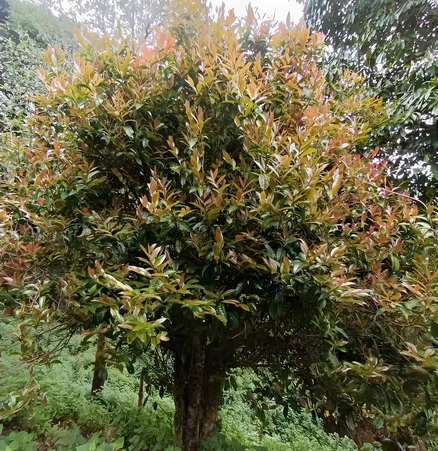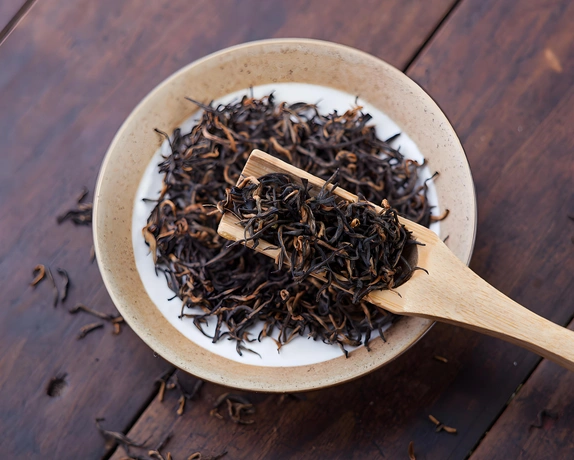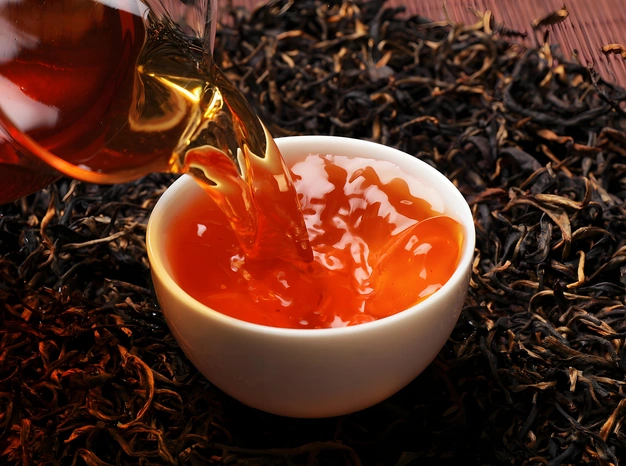Black tea greets you with a warm, amber embrace—its rich aroma swirling malted sweetness with whispers of smoke and spice. In each velvety sip you taste centuries of careful craft, captured in leaves gently withered, rolled, fully oxidized, and fired. Whether drawn to a mindful black tea ceremony steeped in history or craving a modern pick-me-up, this guide will lead you through the world’s finest red brews. From Yunnan black tea curled on ancient tree terraces to delicate Fujian black tea buds once reserved for emperors, discover how black tea in Chinese culture shaped trade routes and social rituals. Prepare to unlock its healthful antioxidants, master perfect infusions, and infuse every moment with the comforting power of black tea.
What Is Black Tea?
At its heart, black tea is simply tea leaves allowed full oxidation—transforming their green chlorophyll into deep russet and releasing complex aroma compounds. This process, sometimes called “fermentation,” consists of:
- Withering: Freshly plucked leaves are spread on trays, wilting until pliable.
- Rolling: Leaves are gently twisted or bruised, rupturing cell walls and triggering oxidation.
- Oxidation: Enzymes convert catechins into theaflavins and thearubigins, enriching tea with amber hues and mellow flavor.
- Firing: Hot-air or charcoal heat halts oxidation, locking in the final taste profile.
Unlike green tea’s grassy brightness or oolong’s floral elegance, black tea embodies bold malt, smoky depths, and lingering sweetness—a canvas upon which terroir and technique paint a masterpiece in every cup.

Black Tea in Chinese Culture
In China, black tea (红茶, hóng chá) holds a revered place. Originating in Fujian’s Wuyi Mountains during the late 17th century, early brews were dubbed “Red Tea” for their reddish infusion—a name that stuck. Traders shipped these precious leaves to Russia, Persia, and Europe along the Maritime Silk Road, igniting global fascination.
Ceremonial Roots
- Gongfu Tea Ceremony: Black tea takes center stage in the Gongfu style, where precision dance of water and leaf releases nuanced aromas.
- Social Rituals: Tea houses from Beijing to Guangzhou have long served black tea as a gesture of hospitality, forging bonds over shared cups.
Regional Traditions
- Yunnan Black Tea: Yunnan’s ancient tea trees yield Yunnan black tea (Dianhong), prized for gold-tipped leaves and honeyed depth.
- Fujian Black Tea: In Fujian’s Qimen and Jin Jun Mei gardens, small-bud cultivars produce Fujian black tea with orchid-like aroma and plum sweetness.
Through dynasties, black tea has shaped literature, diplomacy, and daily life—its cultural footprint as deep as its flavor.
Top Health Benefits of Black Tea
Antioxidants & Detox Support
Laden with polyphenols like theaflavins and thearubigins, black tea fights free radicals, supporting cellular renewal and natural detox pathways. A morning cup flushes toxins, energizes the liver, and leaves skin glowing.
Energy & Mental Focus
As a black tea as coffee alternative, black tea offers a gentler lift than espresso. Moderate caffeine works with L-theanine to sharpen focus without jitters—a balanced choice for demanding days.
Digestive Aid & Metabolism
A cup of black tea and metabolism before or after meals stimulates digestive enzymes and revs metabolic rate. Tannins help soothe occasional bloating, making black tea a digestive ally.
Signature Black Tea Varieties
Yunnan Black Tea (Dianhong)
Grown on misty Yunnan hillsides, Yunnan black tea dazzles with golden buds and malted honey sweetness. Sipping Dianhong, you feel the ancient roots of wild tea forests whisper through each steep.
Fujian Black Tea (Qimen & Jin Jun Mei)
- Keemun (Qimen) Black Tea: From Anhui, Keemun’s delicate plum fragrance and cocoa notes earned it the title “Burgundy of Teas.”
- Jin Jun Mei: Fujian’s signature bud-only tea, Jin Jun Mei crackles with orange-blossom sweetness and velvety malt.
Other Notable Global Styles
- Assam Black Tea (India): Bold, brisk, perfect with milk and sugar.
- Ceylon Black Tea (Sri Lanka): Bright citrus-tinged brew that stands up to iced preparations.
- Darjeeling First Flush: Light, floral muscatel—often called the “Champagne of Teas.”
While these global black teas dazzle, Chinese varieties remain cultural cornerstones—each storied leaf a testament to millennia of innovation.

Flavor Profile & Tasting Notes
Black tea enchants with multiple dimensions:
- Malt & Caramel: Toasted grains, brown sugar, warm toffee.
- Smoke & Spice: Subtle campfire notes, cinnamon, clove.
- Fruit & Floral: Dried fruit, stone fruit, orchid or jasmine traces.
- Earth & Honey: Forest floor, wildflower nectar hints.
Terroir—soil minerals, altitude, humidity—combined with oxidation and firing, sculpts these tasting notes into signature expressions from Yunnan’s ancient trees to Fujian’s refined gardens.
Brewing the Perfect Cup of Black Tea
Ideal Water Temperature & Steep Times
- Western-style: 95–100 °C; 3–5 minutes.
- Gongfu-style: 3–5 g tea per 100 ml; multiple 10–20 second infusions, revealing evolving layers.
Single vs. Multiple Infusions
- Single Brew: Yields maximum strength ideal for morning energy.
- Multiple Steeps: Especially with high-grade Fujian black tea or Yunnan black tea, allow up to 4–6 infusions to experience floral, fruity, and honeyed phases.
Tips for Mastery
- Preheat Your Vessel: Swirl hot water to keep infusion temperature stable.
- Rinse Leaves Briefly: 5 seconds to awaken essential oils without overly diluting them.
- Adjust to Taste: Longer steeps unlock robustness; shorter steeps preserve delicate notes.
A precise brew ensures you deliver every nuance—from brisk malt to honeyed finish—straight to your cup.

🔗 For more tea brewing methods, check out the YouTube video explaining the brewing methods.
Incorporating Black Tea into Daily Life
Morning Energy Ritual
Begin with a vibrant Yunnan black tea, its golden liquor lighting up waking moments and fueling productive mornings.
Afternoon Pick-Me-Up
When energy dips, black tea for office workers brings clarity. A brisk Fujian black tea steep recharges focus, while antioxidants combat desk-bound stress.
Evening Wind-Down
Choose a lighter style—perhaps a mild Darjeeling or Taiwanese oolong blend—to calm without disrupting sleep, honoring black tea’s versatility.
Pair with antioxidant-rich snacks—berries, dark chocolate—or spice it up with cinnamon and ginger for added warmth.
Selecting & Storing Quality Black Tea
- Whole-Leaf vs. Dust: Opt for whole, unbroken leaves; these retain oils and complexity.
- Origin Labels & Grade: Look for region names (Yunnan, Qimen) and harvest info (first flush often superior).
- Proper Storage: Seal in an airtight, opaque container in a cool, dry place; protect from light, moisture, and odors.
Well-stored black tea maintains peak flavor for 6–12 months, rewarding your investment in quality leaves.
FAQs About Black Tea
- How much caffeine does black tea contain?
Approximately 40–60 mg per 8 oz cup, depending on leaf grade and infusion time. - Can black tea help with weight loss?
Yes—its mild caffeine and polyphenols modestly boost metabolism and fat oxidation. - What’s the best black tea for everyday drinking?
A versatile Keemun or Yunnan Dianhong makes for a smooth, satisfying daily brew.
Conclusion: Embrace Black Tea’s Rich Heritage
From the smoke-kissed heights of Yunnan black tea to the refined sweetness of Fujian black tea, black tea offers an unparalleled spectrum of flavor, wellness, and cultural depth. As you master brewing rituals—whether Western-style simplicity or Gongfu precision—you’ll unlock each brew’s unique story. Let black tea’s warm hue and rich aroma become a daily sanctuary: a sensory journey and a timeless tradition in every cup.



